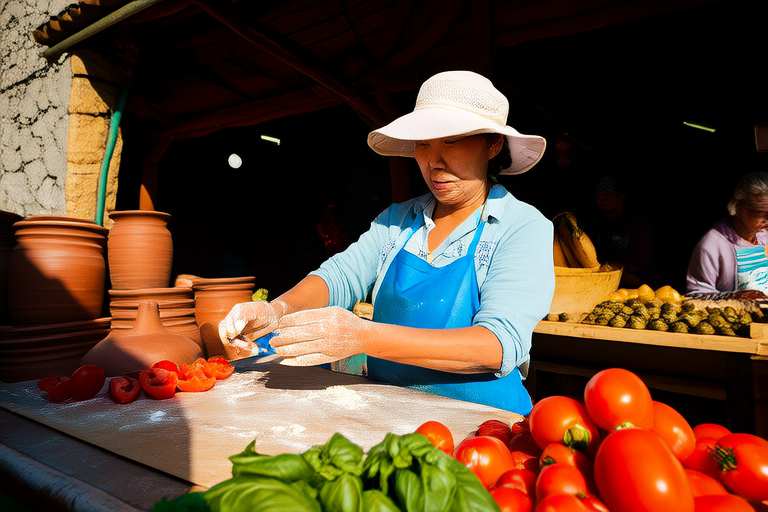Taste the Difference: How Travel Enriches Your Gourmet Experience

Taste the Difference: How Travel Enriches Your Gourmet Experience
Traveling is more than just visiting new places; it’s an opportunity to dive deep into the rich tapestry of global cultures. One of the most delightful ways to experience this diversity is through gourmet travel, where culinary adventures become the highlight of your journey. This trend, which has grown in popularity over recent years, offers a unique way to understand and appreciate the world through its flavors. By exploring different cuisines, you gain insight into the history, traditions, and values that shape each culture. This article delves into how travel enriches your gourmet experience, enhancing your appreciation for food and the stories behind it.
Introduction: The Rise of Gourmet Travel
Gourmet travel is no longer just for the elite; it’s accessible to everyone who seeks to expand their palate. As travelers increasingly prioritize meaningful experiences over material souvenirs, they’re turning to food as a gateway to cultural immersion. Whether you’re savoring street food in bustling markets or indulging in a multi-course meal at a Michelin-starred restaurant, every bite tells a story. These gastronomic journeys offer a window into the soul of a place, revealing its unique identity through its culinary traditions.
Cultural Immersion: From Street Markets to Fine Dining
One of the most rewarding aspects of gourmet travel is the opportunity to immerse yourself in local food scenes. Walking through vibrant street markets, you’ll encounter vendors selling fresh produce, spices, and artisanal goods. These markets are often the heart of a community, where locals gather to share stories and pass down recipes from generation to generation. In contrast, fine dining restaurants offer a more refined glimpse into a region’s culinary heritage. Here, chefs craft dishes that reflect the best of local ingredients and techniques, often drawing inspiration from centuries-old traditions.
Take, for example, the bustling markets of Marrakech, Morocco. The city’s souks overflow with fragrant spices, colorful fruits, and handcrafted pastries. Visitors can watch skilled artisans prepare tagines, the iconic Moroccan stew, while learning about the significance of each ingredient. Meanwhile, in Paris, France, diners can enjoy a luxurious tasting menu at Le Jules Verne, a Michelin-starred restaurant perched atop the Eiffel Tower. The panoramic views complement the exquisite cuisine, offering a sensory experience that transcends mere sustenance.
Regional Flavors: A Feast of Ingredients and Techniques
Each region boasts its own distinct culinary identity, shaped by geography, climate, and historical influences. Regional ingredients, cooking techniques, and seasonal offerings contribute to the uniqueness of each dish. For instance, the coastal regions of Italy are known for their fresh seafood dishes, while inland areas specialize in hearty meat-based meals. Similarly, the mountainous terrain of Switzerland has given rise to robust cheeses and hearty stews.
In Japan, sushi is synonymous with precision and quality. The art of sushi-making involves selecting the freshest fish, carefully preparing the rice, and arranging each piece with meticulous attention to detail. Another iconic Japanese dish is ramen, a noodle soup that varies widely depending on the region. In Tokyo, you might find a rich, tonkotsu broth made from pork bones, while in Sapporo, miso ramen reigns supreme during the winter months.
Sensory Experiences: Heightening the Pleasure of Eating
Travel heightens all five senses when it comes to enjoying food. The sights, smells, tastes, textures, and even sounds of a new environment enhance your culinary experience. Imagine walking through a Thai night market, where the aroma of grilled meats and fragrant spices fills the air. As you approach a vendor, the sizzle of the grill and the clinking of utensils create a symphony of sounds. Once seated, the vibrant colors of the dish before you invite you to take a bite, revealing a complex interplay of flavors and textures.
Sound also plays a crucial role in the dining experience. In Spain, tapas bars are often lively, with patrons chatting and clinking glasses of sherry or cava. The background noise adds to the ambiance, making each bite more enjoyable. Additionally, the tactile sensation of eating can vary greatly depending on the environment. In India, eating with your hands is a common practice that adds a tactile dimension to the meal, allowing you to connect more deeply with the food.
Learning and Skill Development: Cooking Classes and Vineyard Tours
For those who want to take their culinary adventure to the next level, hands-on experiences like cooking classes and vineyard tours offer invaluable opportunities to learn new skills. Cooking classes provide a chance to master traditional recipes under the guidance of expert chefs. You can learn everything from basic knife skills to advanced techniques like molecular gastronomy. Vineyard tours, on the other hand, allow you to explore the nuances of wine production and discover the perfect pairing for your favorite dishes.
Consider taking a cooking class in Tuscany, Italy, where you can learn how to make authentic pasta from scratch. The instructor will guide you through each step, from rolling out the dough to creating intricate shapes like tagliatelle or pappardelle. Alternatively, a vineyard tour in Bordeaux, France, will give you insight into the region’s renowned wine production. You’ll visit historic châteaux, sample various vintages, and learn about the terroir that makes each bottle unique.
Conclusion: Broadening Horizons Through Gourmet Travel
Incorporating gourmet travel into your itinerary offers numerous benefits, from deepening your understanding of local cultures to broadening your culinary horizons. By immersing yourself in the food scenes of different regions, you gain a deeper appreciation for the artistry and craftsmanship behind each dish. The sensory experiences and hands-on learning opportunities provided by gourmet travel foster a lifelong love for diverse culinary traditions. So, the next time you plan a trip, consider adding a few culinary stops to your itinerary. Taste the difference, and let your travels enrich your gourmet experience.